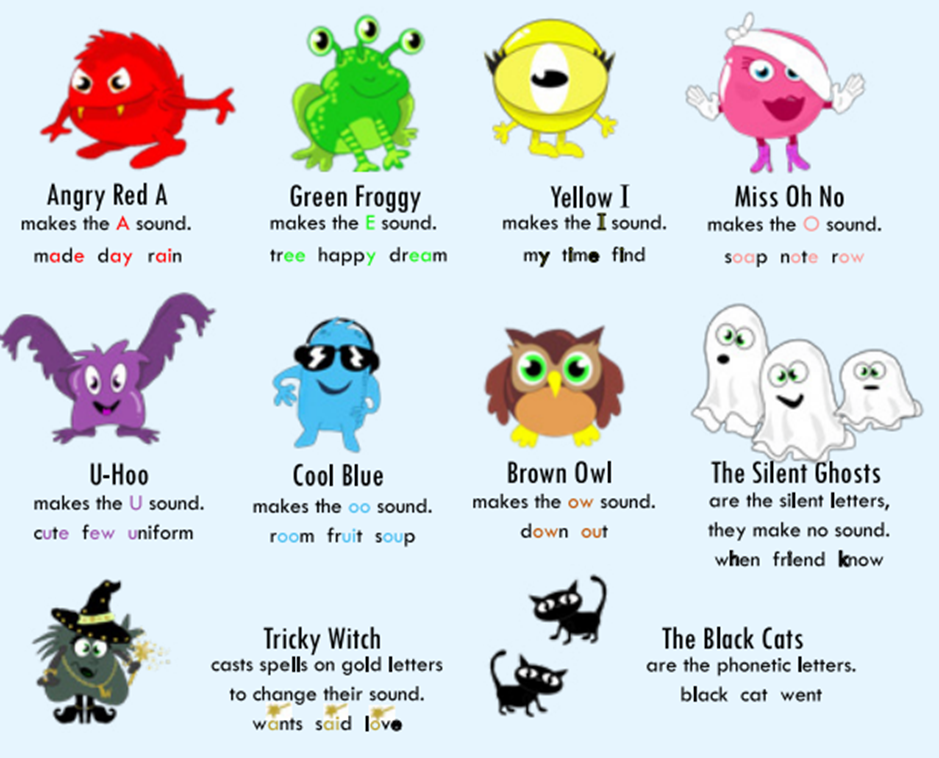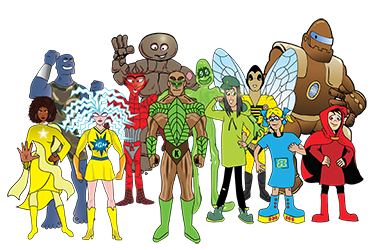Phonics

In Reception and Key Stage One, children are taught synthetic phonics through 20 to 30-minute daily sessions.
At Heath Fields Primary School, we use the DfE approved ‘Monster Phonics’ programme. When selecting an appropriate Phonics scheme to follow, we reviewed a number of different programmes and chose the correct vehicle for the delivery to our children, here at Heath Fields. Our evaluation highlighted Monster Phonics as being best suited to meet the needs of our children. The reasons for this choice are:
- Monster Phonics is a highly engaging scheme and our pupils 'love it!'. For the pupils at Heath Fields, the monster characters are the biggest hook. Each Monster representing a colour and a sound. The children enjoy learning about 'Monster Phonics Land' and learning about the different characters. It makes the learning fun and engaging for all pupils. They particularly love the 'catchy' songs that help introduce the different sounds.
- The colour coding system is excellent for introducing new sounds and is hugely effective for pupils at the start of their learning journey.
- Monster phonics matches the EYFS and KS1 spelling curriculum. It provides one package for spelling, phonics, intervention and provides high quality books that allow teachers to accurately match reading books to a child's phonic ability.
What is Monster Phonics?
Monster Phonics is a highly engaging, structured, synthetic phonics programme. It facilitates learning by using monsters to group graphemes for recall and act as an easy and fun memory cue for children. It also uses colour-coding to highlight the grapheme when teaching a new grapheme. Once taught and secure, the colour is removed.
Monster Phonics matches the Reception EYFS framework and KS1 Spelling Curriculum. It progresses from simple to more complex phonic knowledge and skills, building on prior knowledge. The main principles of systematic synthetic phonics teaching are followed, allowing children to become confident and successful readers, spellers and writers from a very early stage in their school life.
Each monster has a backstory, and these are used in all areas of the phonics programme. Ten monsters and corresponding colours represent the areas of phonics that present the biggest obstacles to learning. Each of these are outlined below:
The Alternative Graphemes for Long Vowel Phonemes
The long A phoneme is made by the red character called Angry Red A. The graphemes that make the long A phoneme are coloured red.
The long E phoneme is made by the green character called Green Froggy. The graphemes that make the long E phoneme are coloured green.
The long I phoneme is made by the yellow I character called Yellow I. The graphemes that make the long I sound are coloured yellow.
The long O phoneme is made by the pink character called Miss Oh No. The graphemes that make the long O sound are coloured pink.
The long U phoneme is made by the purple character called U-Hoo. The graphemes that make the long U sound are coloured purple.
The long oo phoneme is made by the blue character called Cool Blue. The graphemes that make the long oo sound are coloured blue.
The long ow phoneme is made by the brown character called Brown Owl. The graphemes that make the long ow sound is coloured brown.
Silent letters are represented by the Silent Ghosts which make no sound. They are coloured white.
The Tricky Letters are graphemes that have a different phoneme from what has been taught previously. They do not show regular grapheme-phoneme correspondence.
Find out more about Monster Phonics by clicking on the link below
More about Monster Phonics

Please use the link below to find out how you can support your child in their phonics learning
Monster Phonics Support at Home
Spelling
At Heath Fields Primary we follow the Superhero KS2 Spelling Programme which follows on from Monster Phonics.
What is the Superhero Key Stage 2 Spelling Programme?
Superhero Spelling has been designed by teachers, for teachers. A cast of superheroes and powerful memory cues will help your children learn key spelling rules and concepts. This is a complete solution to teaching KS2 spelling with comprehensive planning and resources to teach and practise all the statutory word lists with ease.
A key aspect of our approach is flexibility. Each week consists of three core phases: Learn, Build, and Show. Schools can choose to complete the Learn and Build phases together or separately. At the start of the week, the children will receive their weekly spelling words.
Learn
In the Learn phase, there is a PowerPoint (PPT) presentation to help introduce key concepts. We have ensured there is a powerful mix of age-appropriate activities to make these sessions interactive. We place an emphasis on talk time and partner work. The PPT is embedded to ensure it can be used the across all platforms. After the teaching input, we recommend you review the weekly spellings.
Build
In the Build phase, there is always a main activity and supplementary options. Optional tailored activities include the primary activity aligned with the objective, featured at the top of downloadable resources. Supplementary activities for boosting confidence and understanding include:
- Look Say Cover Write Check
- Handwriting (both cursive and print options for right/left-handed students)
- Word Search
Show
Finally, the Show phase completes a week with optional dictation sentences and a handy self-check process. Weekly spelling words are integrated into six dictation sentences. If desired, children can self-check spelling using highlighted words in the dictation image provided. A CLOZE procedure is included for those who find completing a full dictation challenging.
Click on the link below to find out more about what a Superhero Spelling lesson looks like
Superhero Spelling Lesson overview
